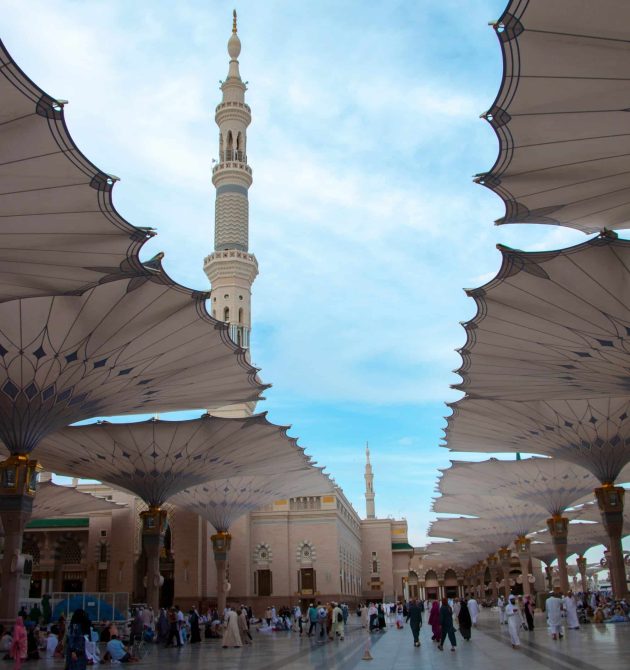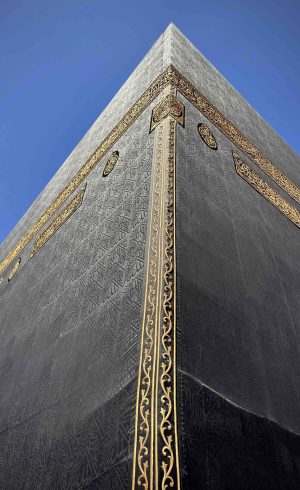After a long international flight, procedures at Madinah Airport are much easier, as it is not as crowded as the Jeddah Hajj Terminal and the process is faster.
Madinah Airport is only about a 30-minute bus ride from all hotels located in the central area around the Prophet’s Mosque (Masjid al-Nabawi).
Spending a few days in Madinah allows for organizing Hajj seminars for pilgrims, giving them the opportunity to prepare for Umrah and Hajj.
Pilgrims will wear their ihram either in the comfort of their hotel rooms or at Zulhulaifa (the Miqat) in Madinah.
2026 HAJJ PACKAGES
Embark on a meaningful spiritual journey with our standardized Hajj packages tailored to your preferences. Choose the best package for you based on services, budget, and the level of comfort you desire. We provide personalized and high-quality services to ensure an unforgettable Hajj experience. Start planning today and turn your dream of Hajj into reality.
Understanding Packages and Categories: What Sets Them Apart?
All-Inclusive Packages
All-inclusive packages provide all essential services for pilgrims throughout the Hajj journey, offering a seamless and comfortable experience. These services include visa processing, flights, accommodation in both Mecca and Madinah, meal services, intercity transportation, Mashair visits, and guidance.
Included Services:
✦ Flights ✦ Accommodation ✦ Transportation ✦ Visa Processing ✦ Meal Services ✦ Tour Guide ✦ Official Procedures
Shifting Packages
Shifting packages offer pilgrims accommodation close to the Mashair visit areas during the Hajj period, providing both comfort and easy access to their belongings. Additionally, these packages usually provide a second accommodation in Mecca (typically near Al-Masjid Al-Haram) either before or after the Hajj period, ensuring easy access for worship.
Non-Shifting Packages
Non-shifting packages offer a single accommodation in Mecca for pilgrims before and after performing their rituals in the Mashair visit areas. This eliminates the need to change hotels, providing more comfort during the stay.
Accommodations included in the packages are selected to cater to various preferences. Options range from 5-star hotels offering maximum luxury and comfort, to 4-star hotels balancing luxury and practicality, and 3-star hotels and residences that provide basic services for those seeking a more extended and affordable experience.
Accommodation in Mecca
Packages vary in offering either a single accommodation in Mecca before and after the Hajj period (Non-Shifting), or the flexibility to change accommodation in Mecca before or after Hajj (Shifting).
Packages and their corresponding prices are customized according to duration:
Minimum 6 days for Mashair packages
10 days for Non-Shifting packages
14 days for Shifting packages
Service providers may also offer extended accommodation options to meet the preferences of pilgrims.
Proximity to Masjid al-Haram
Mina Tents
Room Types
Transfers
Additional Services
To allow pilgrims to compare different accommodation options and evaluate their proximity to Masjid al-Haram and Mashair visit sites, Mecca is divided into various zones. Each zone has unique features catering to different preferences.
Paketler ve bunlara karşılık gelen fiyatlar, süreye göre özelleştirilmiştir; Mashair paketleri için minimum 6 gün, Taşınmasız paketler için 10 gün ve Taşınmalı paketler için 14 gün belirlenmiştir. Hizmet sağlayıcılar, hacıların tercihlerine hitap edecek seçenekler sunabilmek için paketlerinde ek konaklama süresi de teklif edebilirler.
To help pilgrims compare different accommodation options and assess their proximity to Masjid al-Haram and Mashair sites, Mecca is divided into various regions. Each region offers unique features to suit the preferences of different pilgrims.
This zone generally covers areas overlooking the courtyards of Masjid al-Haram, allowing pilgrims to easily walk to the mosque.
Surrounds Zone A, still offering proximity to Masjid al-Haram but at a slightly greater distance. Walking to Masjid al-Haram is still possible, but some accommodations offer shuttle services during prayer times for added convenience.
Covers a large part of Mecca, where walking to Masjid al-Haram or Mashair visit sites is not possible. Still, it offers a wide range of accommodation options. Some provide shuttle services to Masjid al-Haram during prayer times.
Located near the Mashair visit sites, this zone allows easy access to Mina accommodations.

Al-Masjid Al-Haram
Jamarat
Mina
Muzdalifah
Arafat
Single bed in a double room
Two separate beds in a double room
Three separate beds in a triple room
Four separate beds in a quadruple room
The distance between Mecca and Madinah is approximately 450 km, usually covered by bus, which typically takes 8-9 hours. Bus travel is the default mode in most packages, with modern vehicles prioritizing comfort throughout the journey.
High-Speed Train (TGV)
Airplane
Shuttle Service
Private Vehicle Services
Service providers may also offer domestic flights or the Haramain high-speed train for intercity travel. These advanced solutions not only provide a comfortable journey but also ensure schedules are kept, thereby improving the overall experience of pilgrims traveling between Mecca and Madinah.
Hajj Testimonials: Pilgrims Share Their Life-Changing Experiences
Testimonials
Madinah Munawwarah
Madinah Munawwarah
Makkah Mukarramah
Makkah Mukarramah
EXPERIENCE THE DIFFERENCE OF PILGRIMAGE WITH HİSAR EUROPE!
WHAT IS Hajj?
Hajj is one of the five pillars of Islam. It is both a financial and physical worship. Hajj is obligatory once in a lifetime for a person who meets the conditions. Although her/his financial situation is sufficient, if her/his health is not sufficient until the end of her/his life, she sends a representative.
Cross; In the dictionary, it is the intention to visit the places to be honored.
In occupation; It is to visit a special place (Kaaba-i Magnificent and the sacred places around it) at a special time (Hajj months; Shawwal, Dhu al-Qa’dah, Dhul-Hijjah), with a special act (Hajj ritual; complying with the fards, wajibs and sunnahs of the hajj).
Our Prophet (S.A.V) said; Islam is founded on five basic principles. They say that there is no god other than Allah (swt) and that Muhammad (pbuh)
Testifying that she/he is the prophet of Allah, performing prayers, giving alms, fasting in Ramadan and making pilgrimage to the Kaaba.






Hajj Pre-Registration Form
HAC 2026
Information
Hisar Europe Travel, Only PRE-REGISTRATION is required for Hajj 2026.
For final registration, individual registration is required via the website hajj.nusuk.sa of the Ministry of Hajj of Saudi Arabia.
Hisar Europe will provide you with all the necessary support during the Hajj registration and follow-up of the process.



Understanding Hajj: The Sacred Journey of Faith and Devotion
Hajj is one of the Five Pillars of Islam, a profound spiritual obligation that every Muslim must perform at least once in their lifetime, provided they meet the necessary conditions. This sacred journey to Mecca in Saudi Arabia, performed during a specific period in the Islamic calendar, holds immense religious, emotional, and historical significance. You can easily go to Hajj with Nusuk Hajj
The Essence of Hajj: A Pilgrimage of Unity and Devotion
Hajj is a journey of transformation, uniting millions of Muslims from diverse cultures and backgrounds in a shared act of worship. Each year, during the Hajj season, believers converge on Masjid al-Haram, the holiest mosque in Islam, to partake in rituals that echo the legacy of Prophet Abraham and Prophet Muhammad.
This annual pilgrimage is not just a physical journey but also a test of faith, patience, and endurance, requiring spiritual, emotional, and physical preparation. It is a demonstration of equality before Allah, as male pilgrims and female pilgrims don simple white garments known as Ihram, symbolizing purity and humility.
When Does Hajj Take Place?
Hajj occurs during the month of the Islamic calendar known as Dhul-Hijjah, the twelfth and final month. The culmination of the pilgrimage coincides with Eid al-Adha, the Festival of Sacrifice, which commemorates Prophet Abraham’s unwavering devotion to Allah.
The Rituals of Hajj: Steps to Fulfillment
- Ihram: Entering the Sacred State Pilgrims enter the state of Ihram at designated points called Miqat. They declare their intention (Niyyah) and recite the Talbiyah prayer, preparing for the journey with a pure heart and focus on Allah.
- Tawaf: Circling the Kaaba Pilgrims perform Tawaf by circling the Kaaba seven times in the Masjid al-Haram, symbolizing Allah’s centrality in their lives.
- Sa’i: Walking Between Safa and Marwah The act of walking between the hills of Safa and Marwah honors the determination of Hajar (Hagar) in her search for water for her son, Ismail.
- Arafat: Standing in Devotion On the 9th day of Dhul-Hijjah, pilgrims gather at the plain of Arafat to seek forgiveness and mercy. This moment of prayer and reflection is considered the pinnacle of the Hajj pilgrimage.
- Muzdalifah and Mina: Stoning the Devil Pilgrims collect pebbles at Muzdalifah for the symbolic stoning of the devil (Ramy al-Jamarat) in Mina, rejecting evil and temptation.
- Qurbani: Sacrificing for Allah As part of Eid al-Adha, pilgrims perform a sacrificial offering, commemorating Prophet Abraham’s willingness to obey Allah’s command.
- Tawaf al-Ifadah and Farewell Tawaf After the rituals at Mina, pilgrims complete another round of Tawaf and a final farewell Tawaf before departing Mecca.
The Role of the Ministry of Hajj and Umrah
The Ministry of Hajj and Umrah in Saudi Arabia oversees the organization and management of the pilgrimage, ensuring the safety and comfort of the millions of participants. With advancements in logistics and technology, the ministry facilitates efficient visa processes, accommodation, and crowd management for the year Hajj.
Who Must Perform the Hajj?
The obligation to perform Hajj applies to Muslims who are physically and financially capable. This requirement underscores Islam’s practicality, allowing believers to fulfill their duties when circumstances permit.
Hajj and Umrah: Understanding the Difference
While both are journeys of worship to Mecca, Hajj and Umrah differ in timing and significance. Hajj is obligatory and performed during a specific time of the year, whereas Umrah is a non-mandatory pilgrimage that can be performed at any time.
The Global Significance of Hajj
Each year, millions of Muslims embark on this transformative journey, reinforcing the universal bonds of the Muslim Ummah. It is a profound reminder of life’s purpose, focusing on faith, humility, and submission to Allah’s will.
Preparing for Hajj: A Holistic Approach
Preparing for Hajj involves more than securing travel arrangements. It requires spiritual readiness, understanding the rituals, and preparing physically for the demands of the journey. Pilgrims must also ensure compliance with regulations set by the Ministry of Hajj to facilitate a seamless experience.
Embracing the Hajj Experience
For those who undertake Hajj, the experience is life-changing, fostering a deeper connection with Allah and a renewed sense of purpose. The journey, though demanding, brings immense rewards and blessings.
Conclusion: The Ultimate Act of Worship
Hajj is a pillar of faith that unites Muslims across the globe in a shared devotion to Allah. It is a journey of self-discovery, humility, and submission, culminating in the celebration of Eid al-Adha. Whether you are planning your Hajj or seeking to understand its significance, this pilgrimage remains a timeless testament to the enduring spirit of Islam.

